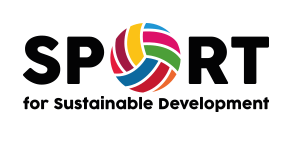
GLOBAL INTRODUCTION OF THE GOAL WITH SOME STATISTICS
The objective SDG 6 is to guarantee the availability and sustainable use of water and sanitation for all.
The planet Earth is also named the Water Planet, however, of the 70% of the water that is available for human consumption: only 2.5% of this is freshwater of which only 1.2% is easily accessible on the surface. In addition to quenching thirst, water is also vital for other aspects of our lives. About 1.2 billion people worldwide have difficult access to drinking water and about 1.6 billion do not have enough infrastructures for basic water sanitation.
In the world, the main sources of water pollution come from cities and agricultural and industrial activities. In developing countries, 80% of sewage is discharged, without treatment, directly into rivers and lakes, which further reduces the availability of water resources. Contaminated water can transmit diseases such as diarrhea, cholera, dysentery, fever, typhoid and polio. It is estimated that drinking contaminated water causes deaths from diarrhea in 485 000 people a year.
If nothing is done about water, experts predict that there will be conflicts between countries, nations and peoples over the water dispute, in the not too distant future.
HOW CAN SPORT BE USEFUL TO REACH THE GOAL?
As change-maker, sport has played an important role in the fight for water cleaning and treatment, not only because of the urgency but also because of the awareness that this theme has today. A strong incentive for implementing measures is the hosting of major sport events, such as the Olympic Games or World Championships (e.g. football or athletics).
The two most recent editions of the Summer Olympics (Rio 2016 and Tokyo 2020) implemented (and currently implement) water protection programs. Those programs aim to leave an effective and lasting legacy on both cities and to future generations.
In Brazil, a holistic program (Sanitation Pact) was implemented with the objective of cleaning and treating the waters of the Rio de Janeiro region, in particular Guanabara Bay, a venue for the Olympic Games. This was not entirely possible, but the program continued to be implemented until 2017. Through this program, filters were applied in the bay to remove waste, water treatment stations were installed, their surroundings were reforested, and solid waste was removed from their waters.
Video: https://www.youtube.com/watch?v=keDhORnfA4Q
In Tokyo, for the next Olympic Games, a sustainability concept called “Be better, together – For the planet and the people”, the city will make effective use of water resources to reduce spending and promote its reuse. Many of the venues (such as the ones for Hockey or Fencing) are built with regrowable raw materials or recycled materials that will retain rainwater and treat it, so that it can be used inside. These techniques of construction and use of materials allow savings of up to ⅔ of water in these infrastructures, setting an excellent example of how sport can lead the promotion of aquatic sustainability.
Other sport-related examples
In India, where cricket is the most important sport, some measures were taken, as the stadium’s waste was not separated, and it would be drawn into the landfills and consequently in the ocean. A green protocol was adopted to prevent this waste would pollute land and oceans: for that reason several bins were placed in the stadiums, some for wet waste, others for dry waste and volunteers were recruited to make sure rubbish would end up in the right place. Then, the wet waste was sent to biogas or composting plants and the dry waste to recycling factories. With this initiative, tons of plastic were not thrown into the ocean, polluting it putting in danger various ecosystems.
At sailing events, such as world championships or the famous Volvo Ocean Race, several initiatives have been implemented to raise awareness about the preservation of the oceans and their pollution. Some initiatives are: the total ban on the use of plastic bottles or straws; use of recycled water bottles; filtering sea water for the use by sailors and crew; training and education sessions for the teams about marine life and ocean conservation and the use of a yacht to analyze and expose the presence of microplastics in competition waters.
The famous sports brand Adidas joined the environmental organization Parley in order to transform marine pollution into sportswear and shoes. In 2019 it produced 11 million pairs of shoes under this program, which has already saved and reduced 2800 tons of plastic from reaching the ocean. All the plastic is collected from beaches and coastal areas that have considerable waste, then plastic is transformed in Adidas factories into shoes and other uniforms that are as comfortable as all the others. In fact, this sport company already produces 40% of its products with recycled polyester, which comes from plastic in these marine areas. With this partnership, Adidas is setting an important example for the fight for cleaning and conservation of the oceans.
Video: https://www.youtube.com/watch?time_continue=4&v=iisMyJdkyqg



